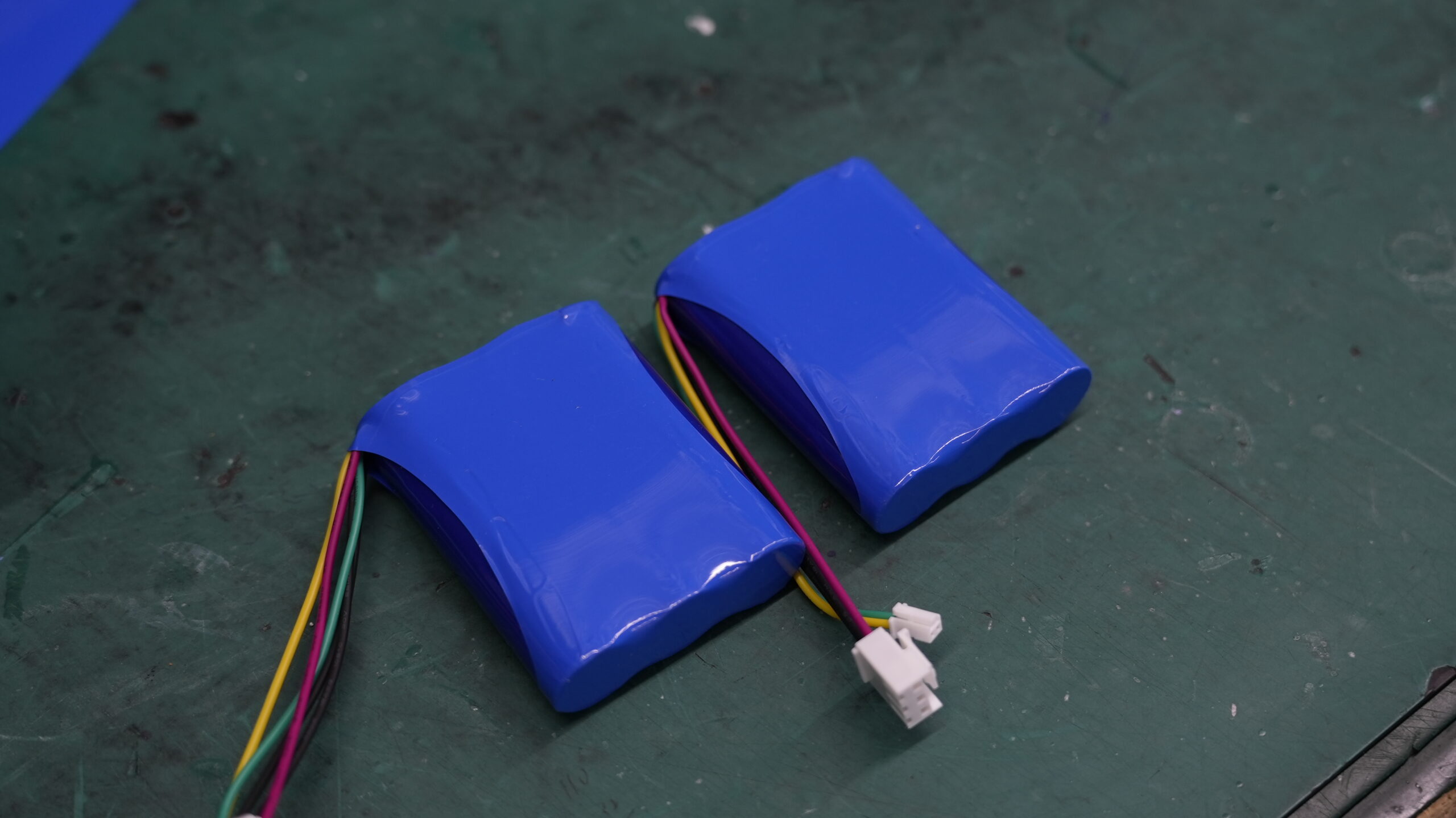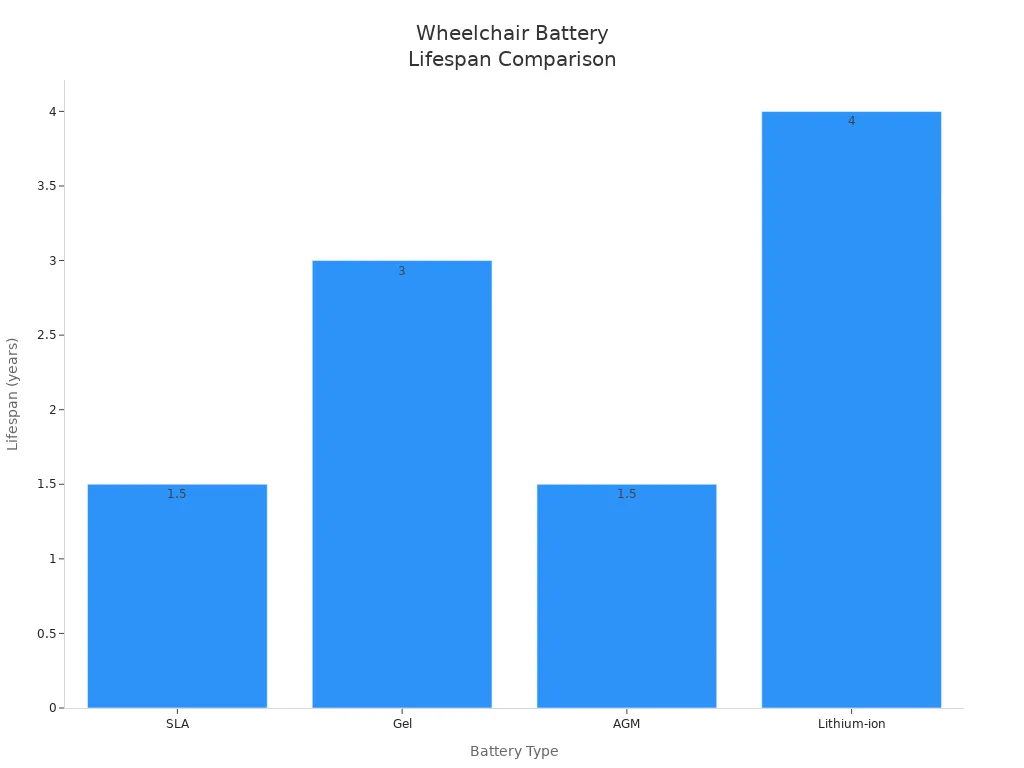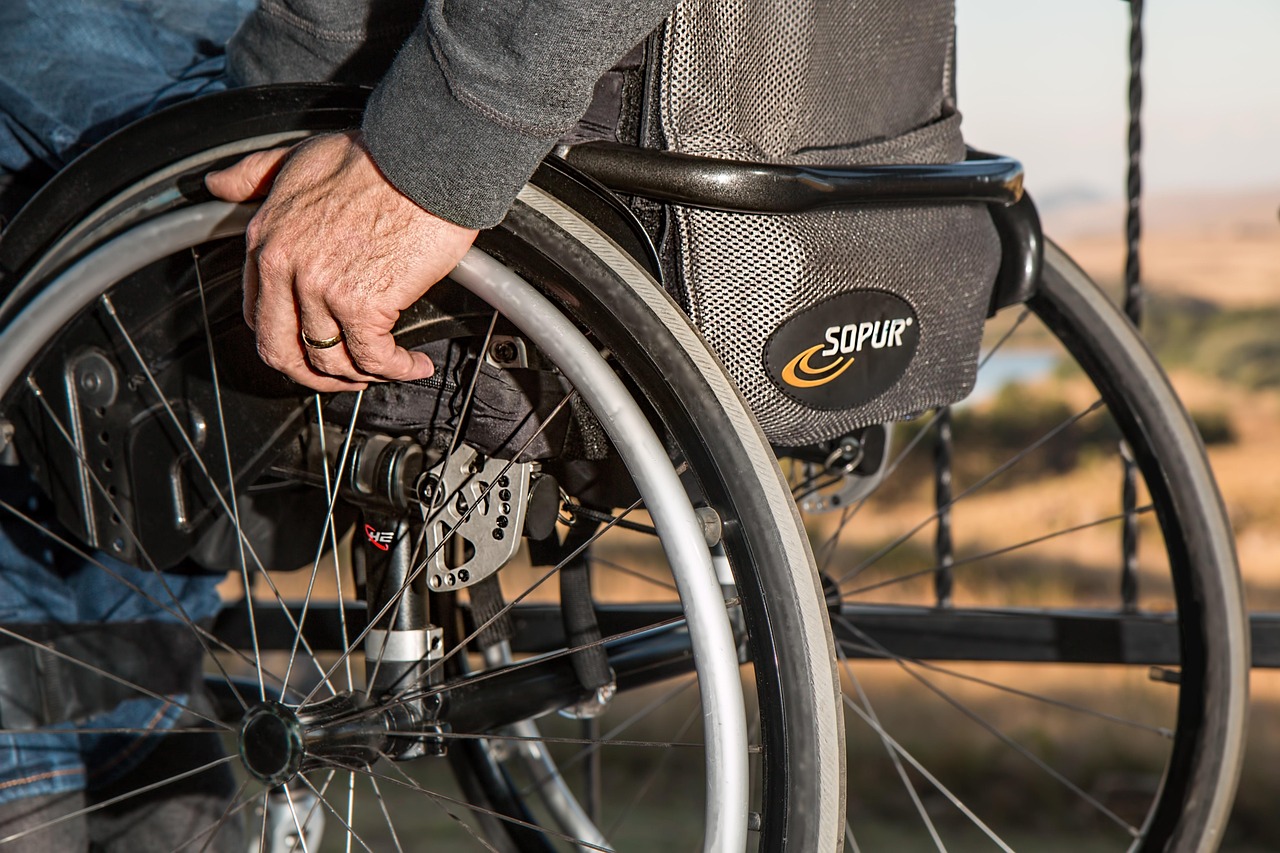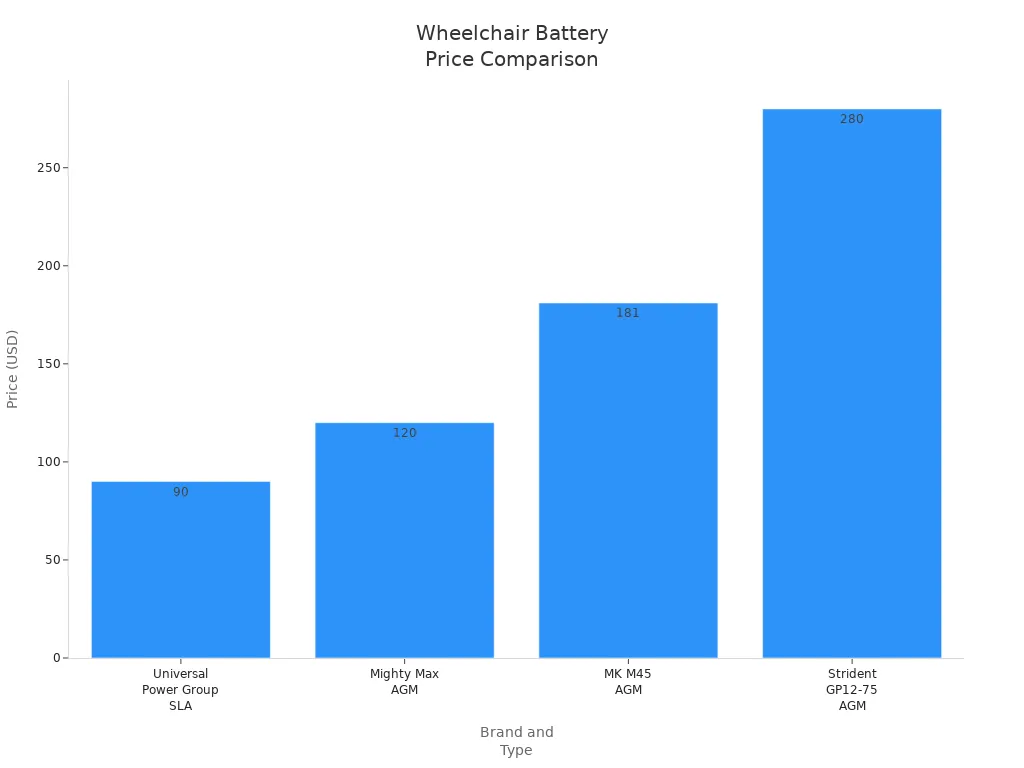
When you start wheelchair battery selection, assess your mobility needs and check wheelchair compatibility.
Choosing the right battery supports safety, reliability, and independence for wheelchair users.
Lithium batteries offer higher energy density, longer lifespan, and lighter weight, which extend wheelchair range and improve handling.
Reliable wheelchair batteries with advanced management systems help prevent accidents and boost user confidence.
Key Takeaways
Choose a wheelchair battery that matches your mobility needs and wheelchair specifications to ensure safety and reliable performance.
Consider lithium-ion batteries, especially LiFePO4, for longer lifespan, lighter weight, and better power, even if they cost more upfront.
Maintain your battery properly by using the right charger, charging regularly, and following manufacturer guidelines to extend battery life and avoid issues.
Wheelchair Battery Selection

Electric wheelchair batteries power your mobility device and determine how far and how reliably you can travel each day. You need to understand the different types of wheelchair batteries and how they affect performance, safety, and daily use.
Electric Wheelchair Batteries
Electric wheelchair batteries store and deliver energy to the wheelchair’s motor and control systems. You rely on these batteries for consistent power, smooth operation, and dependable range. The right battery choice ensures your wheelchair performs well and keeps you safe.
Tip: Always check your wheelchair’s manual for recommended battery types and specifications before making a purchase.
You will find several types of electric wheelchair batteries on the market. Each type offers unique benefits and drawbacks for performance, maintenance, and cost.
Battery Types
You can choose from several types of wheelchair batteries. The most common types include sealed lead-acid (SLA), absorbent glass mat (AGM), gel, and lithium-ion batteries. Each type has different technology, lifespan, weight, and maintenance needs.
Sealed Lead-Acid (SLA) Batteries: Affordable, heavy, and require regular maintenance. They have a shorter lifespan and can affect wheelchair maneuverability.
AGM Batteries: A sealed lead-acid type with better capacity and discharge rates. They are spill-proof and low maintenance but still heavy.
Gel Batteries: Another sealed lead-acid type, filled with gel electrolyte. They resist vibration and temperature changes, last longer than SLA, and suit frequent travelers.
Lithium-ion Batteries: Lightweight, high energy density, and long lifespan. They charge faster and require less maintenance but cost more upfront.
LifePO4 (Lithium Iron Phosphate) Batteries: A subtype of lithium-ion, known for safety, stability, and long cycle life. They balance performance and longevity.
Here is a comparison of the main types of wheelchair batteries:
Battery Type | Technology | Key Features and Differences |
|---|---|---|
Absorbent Glass Mat (AGM) | Sealed lead-acid (deep cycle) | Durable, low maintenance, spill-proof, handles deep cycling, heavier weight, consistent power output |
Gel | Sealed lead-acid with gel electrolyte | Resistant to vibrations and extreme temperatures, low maintenance, longer lifespan than traditional lead-acid |
Lithium-ion | Advanced lithium-ion chemistry | Lightweight, higher energy density, longer run times, faster charging, longer lifespan, more expensive |
LifePO4 (Lithium Iron Phosphate) | Specific lithium-ion variant | Exceptional safety, long cycle life, stable, balanced performance, longevity, and safety |
You should also consider advanced lithium battery chemistries for specialized needs. Here is a technical comparison of lithium battery types used in electric wheelchair batteries and related industries:
Lithium Battery Type | Platform Voltage (V) | Energy Density (Wh/kg) | Cycle Life (cycles) | Key Features | Application Scenarios |
|---|---|---|---|---|---|
LiFePO4 | 3.2 | 90-140 | 2000-5000 | High safety, long life, stable | Medical, industrial, infrastructure |
NMC | 3.7 | 150-220 | 1000-2000 | High energy, balanced life | Robotics, consumer electronics |
LCO | 3.7 | 150-200 | 500-1000 | High energy, short life | Consumer electronics |
LMO | 3.7 | 100-150 | 300-700 | High power, moderate energy | Security, industrial |
LTO | 2.4 | 70-80 | 7000-20000 | Ultra-long life, fast charge | Infrastructure, medical |
Solid-State | 3.7-4.2 | 250-350 | 1000-2000 | High safety, high energy | Medical, robotics |
Lithium Metal | 3.7-4.2 | 350-500 | 500-1000 | Highest energy, developing | Advanced medical, research |
You can see that lithium-ion batteries, especially LiFePO4, offer the best combination of safety, cycle life, and stable performance for medical and industrial wheelchairs.
Best Wheelchair Battery
The best wheelchair battery for you depends on your usage, environment, and performance needs. You should look at lifespan, weight, charging time, and cost. Here is a table comparing the expected lifespan of different types of wheelchair batteries:
Battery Type | Expected Lifespan | Additional Notes |
|---|---|---|
SLA | 12-18 months | Lifespan affected by discharge depth, temperature, charging habits |
Gel | Up to 3 years | Longer lifespan than SLA, more expensive, may have lower range |
AGM | 12-18 months | Similar to SLA but better capacity and discharge rates |
Lithium-ion | Up to 4 years | Longest-lasting, ideal for lightweight and portable scooters |

You should also consider battery performance and safety standards. Lithium-ion batteries provide a superior power-to-weight ratio, longer service life, and consistent power delivery. This means you get longer travel distances and better satisfaction. Lead-acid batteries are heavier and have a shorter lifespan, which can reduce performance and range over time.
Note: Always check for certifications like UN38.3, EN 12184, ISO 7176, and FDA approval to ensure your battery meets safety and quality standards.
Common causes of battery failure include aging, loose wiring, corroded terminals, and improper charging habits. You can extend battery life by following manufacturer guidelines and maintaining proper charging routines.
When you make your wheelchair battery selection, focus on the types of wheelchair batteries that match your daily needs. Lithium-ion batteries, especially LiFePO4, are ideal for users who need lightweight, long-lasting, and high-performance electric wheelchair batteries. Gel batteries work well for frequent travelers due to their durability and temperature resistance.
You should always match the battery type to your wheelchair model and usage scenario. For medical, robotics, and industrial applications, lithium battery packs with advanced chemistries offer the best wheelchair battery solution for safety, reliability, and long-term value.
Assessing Quality and Cost

Quality Factors
You need to judge the quality of wheelchair batteries before making a purchase. Focus on these key factors:
Lifespan and Longevity: High-quality batteries last longer and provide consistent power. Lithium battery packs, especially LiFePO4, offer excellent battery longevity, often reaching 2,000 cycles or more.
Capacity: Check the amp-hour (Ah) rating. Higher capacity means longer use between charges, which improves performance and reduces downtime.
Brand Reputation: Well-known brands usually deliver better battery quality and reliability. You can judge the quality of wheelchair batteries by reading reviews from other users and professionals.
Warranty: A warranty of one year or more signals manufacturer confidence in battery quality and durability. Some high-quality batteries, like those from Wheelchair88, offer a 1-year warranty, which is longer than the standard 6 months.
Reviews: Always read reviews to judge the quality of wheelchair batteries. Reviews reveal real-world performance, battery longevity, and any common issues.
Tip: Maintenance needs differ by battery type. Lithium-ion and LiFePO4 batteries require less upkeep than lead-acid types, saving you time and reducing long-term cost.
Here is a table comparing lithium battery chemistries for wheelchair use:
Chemistry | Voltage (V) | Energy Density (Wh/kg) | Cycle Life (cycles) | Longevity | Maintenance | Application Scenarios |
|---|---|---|---|---|---|---|
LiFePO4 | 3.2 | 90-140 | 2,000-5,000 | High | Low | Medical, industrial, infrastructure |
NMC | 3.7 | 150-220 | 1,000-2,000 | Medium | Low | Robotics, consumer electronics |
LTO | 2.4 | 70-80 | 7,000-20,000 | Very High | Very Low | Infrastructure, medical |
Cost Considerations
The price and cost of wheelchair batteries depend on several factors. You should compare both initial price and long-term cost to judge the best value.
Battery type affects price the most. Lithium-ion batteries cost more upfront ($300–$750), but their battery longevity and low maintenance reduce replacement cost over time. SLA batteries are cheaper ($100–$300) but need more frequent replacement.
Capacity increases price. Larger batteries with higher amp-hour ratings cost $100–$200 more but deliver longer range.
Brand and quality matter. Premium brands charge more, but you gain reliability, better warranty, and longer battery longevity.
Purchase source impacts price. Online retailers, local stores, and specialty suppliers offer different prices and support options.
Maintenance affects long-term cost. High-quality batteries with low maintenance needs save you money on upkeep and replacements.
Here is a table summarizing the price and cost of wheelchair batteries by type and brand:
Brand | Type | Voltage | Capacity (Ah) | Price (USD) | Cycle Life | Weight | Notes |
|---|---|---|---|---|---|---|---|
Universal Power Group | SLA | 12V | 35 | ~$90 | ~300 | 22.5 lbs | Affordable, maintenance-free |
Mighty Max | AGM | 12V | 55 | ~$120 | ~500 | 38.58 lbs | High capacity, heavier |
MK M45 | AGM | 12V | ~$181 | ~450 | 35.3 lbs | Premium, compact | |
Strident GP12-75 | AGM | 12V | 75 | ~$280 | 500-800 | 66.1 lbs | High capacity, long backup |
Ufine Battery | LiFePO4 | 12V | 50 | ~2,000 | 8.8 lbs | Lightweight, high safety, premium cost |

You can save on long-term cost by investing in high-quality batteries. These batteries last longer, require less maintenance, and reduce the need for frequent replacements. Reviews and warranty coverage help you judge the quality of wheelchair batteries and make informed decisions about price and cost of wheelchair batteries. Always balance affordability with quality, durability, and battery longevity for the best results.
Tips on Buying Wheelchair Batteries
Buying Wheelchair Batteries
When purchasing wheelchair batteries, you need to match the battery type to your daily mobility needs. Start by checking your wheelchair’s manual for the correct voltage, amp-hour rating, and physical size. Always use batteries that fit your wheelchair’s specifications to ensure safety and reliability.
Here are some essential tips on buying wheelchair batteries:
Choose batteries with a reliable Battery Management System (BMS) to protect against overcharging and overheating. BMS technology is especially important for lithium battery packs used in medical and industrial wheelchairs.
Use the charger supplied with your wheelchair. Avoid automotive chargers, which can damage batteries and reduce reliability.
Charge batteries daily or after each use. For less frequent use, charge at least twice a week. This routine extends battery life and maintains reliability.
Read customer reviews and product reviews before purchasing. Reviews highlight real-world performance and reliability.
Consult mobility professionals or suppliers for advice. They help you select batteries that match your needs and ensure compatibility.
Look for deals from reputable suppliers, but always prioritize reliability over price. High-quality batteries reduce long-term costs.
Tip: Store your wheelchair in a climate-controlled area to protect batteries from extreme temperatures.
Compatibility Tips
You must verify battery compatibility before purchasing. Follow these steps:
Consult your wheelchair’s manual for battery size, type, and voltage.
Check that battery connectors match your wheelchair.
Follow manufacturer guidelines for battery selection.
Seek advice from mobility experts if you have questions.
Confirm that batteries have safety certifications for reliability.
Common Mistake | Error Manifestation | Avoidance Method |
|---|---|---|
Wrong battery type selection | Incompatible battery affects efficiency and safety | Confirm type, voltage, and capacity per manual |
Mismatched battery parameters | Size or voltage mismatch causes installation or performance issues | Match new battery parameters to original specifications |
Wrong charger selection | Incorrect charger damages battery | Use only manufacturer-approved chargers |
Note: Efficient driving habits, such as smooth acceleration and avoiding rough terrain, help reduce battery strain and improve reliability.
When you select a wheelchair battery, consider these factors:
Compare battery types, lifespan, and cost.
Check compatibility and capacity for your wheelchair.
Prioritize reliability and maintenance routines.
Consult professionals for advice.
Choose lithium battery packs for medical, robotics, and industrial wheelchairs to maximize safety and performance.
FAQ
What is the recommended lithium battery chemistry for medical sector applications?
LiFePO4 offers high safety, long cycle life, and stable voltage. You can rely on it for medical devices that require consistent performance and reliability.
How do you ensure lithium battery pack compatibility with robotics equipment?
Check voltage, amp-hour rating, and connector type. Review technical specifications and consult your robotics supplier for approved lithium battery pack models.
What factors affect lithium battery pack lifespan in industrial environments?
Temperature, charging habits, and cycle depth impact lifespan. Use batteries with advanced management systems and follow manufacturer guidelines for optimal performance.




